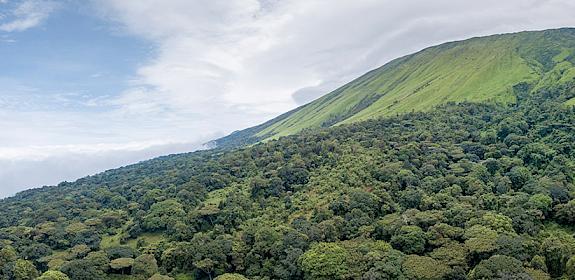
Shark fin and shark fin off cut during the drying process in Hong Kong. Tracability systems are essential in ensuring the legality and sustainability of products such as shark fin © WWF-Hong Kong / Tracy Tsang
i
a mechanism to support sustainable trade
At the most basic level, traceability systems are used to ensure the quality, safety, and environmental responsibility of consumer products.
They provide buyers throughout supply chains with reliable, transparent, and accessible information on the origin of what they buy, whilst simultaneously providing governments, producers, processors, and retailers with assurances as to the product's compliance with national and international legislation. Traceability is complex and nuanced, varying by wildlife species, end product, location, volume, and myriad other factors. The issue of traceability, particularly within CITES-listed species, is of particular relevance to the fish, timber, and wild plant trade, given the rampant overexploitation of many of such species.

A traceable product is simply one that can be verifiably tracked through the supply chain to its origin—it should be a fundamental requirement for a host of fish products
Glenn Sant, Fisheries Programme Leader
the definition of traceability
As per the CITES Standing Committee Traceability Working Group:
"Traceability is the ability to access information on specimens and events* in a CITES species supply chain from harvest to subsequent transactions needed in order that authorities**, producers and traders can substantiate both legal acquisition and non-detrimental findings."
A dried seafood store in Hong Kong that sells range of products including fish maw, shark fin and a range of other marine species © WWF-Hong Kong / Tracy Tsang
i
*This information should be carried from as close to the point of harvest as practicable and needed through to the end of the supply chain on a case by case basis, noting the system needs to be designed for the specific products to be traced from particular sources to demonstrate legal acquisition, non-detrimental findings and prevent laundering of illegal products.
**Authorities refer to Scientific, Management and Enforcement CITES Authorities and other such as Customs, etc.
moving forward
There is much that traceability systems can contribute towards the protection of both wild species and the people who depend on them.
Below are a list of minimum measures that traceability systems should take to work towards sustainable, transparent, and traceable wildlife trade:
- access to reliable information to demonstrate compliance with national/international requirements
- provide robust traceability records of the product's origin and movement throughout the supply chain
- ensure key data, such as species, origin, and processing records, is included across supply chains
- use digital recording, tracking, and tracing of data
- use independent verification and auditing



